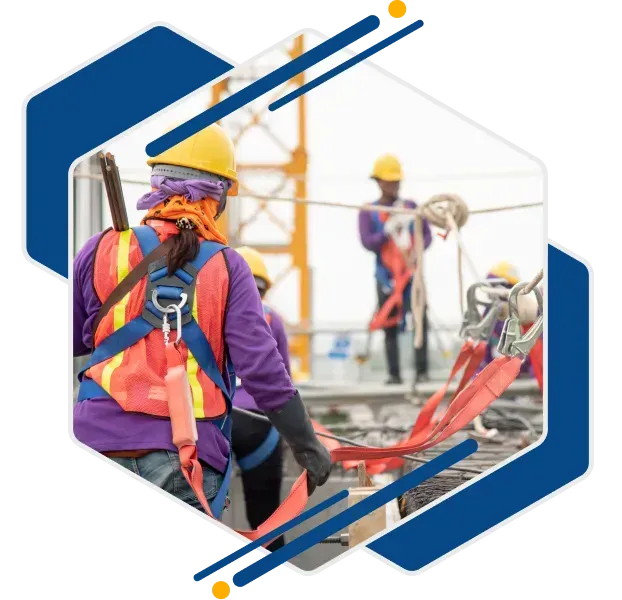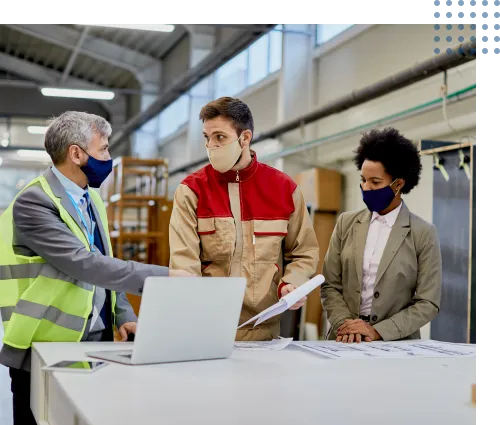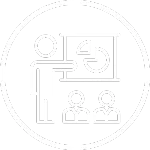Now Offering Spanish Safety Training!

Now Offering Spanish Safety Training!
General Safety
Building an Effective Safety & Health Committee System
FSDAVCFEBFEVSDDVFSD
FSDAVCFEBFEVSDDVFSD
FSDAVCFEBFEVSDDVFSD
General Safety - Safety & Health Committee System
Having a System for Safety & Health Committees

Safety and health committee systems play a critical role in promoting and expanding upon workplace safety. These committees bring employees and management together to identify hazards, suggest improvements, prevent incidents, and ensure compliance with safety protocols. By fostering collaboration, they create a safer environment that aligns with OSHA standards.
An effective safety committee involves regular meetings, clear communication, and ongoing training. This structure allows members to discuss current safety challenges, evaluate solutions, and implement proactive measures. Continuous engagement ensures that safety initiatives are understood and effectively practiced by all employees.

How Committees Guarantee Enhanced Safety Cultures
Safety and health committees create a collaborative environment where employees can actively engage in safety discussions. By encouraging open dialogue, these committees identify potential hazards, suggest practical solutions, and foster trust between staff and management. This cooperative approach boosts safety awareness and accountability at all organizational levels, making it easier to implement safety protocols effectively.
Committees are most successful when members have a clear understanding of safety protocols and responsibilities. Regular training ensures that members are well-prepared to address various safety challenges. Engaging in workplace safety training enhances the committee’s effectiveness and authority by equipping members with updated safety knowledge, new procedures, and skills tailored to the specific needs of their roles.
Frequent meetings help committees stay aligned with OSHA regulations and adapt to evolving workplace conditions. By maintaining a steady flow of communication and updates, committees can promptly address emerging risks. Regular evaluation of safety measures, combined with member feedback, ensures that the safety strategy remains relevant and effective for the company as a whole.
Effective Strategies for Safety Committee Systems

Establishing clear roles within a safety committee is essential for effective operation. Each member should understand their responsibilities, from identifying hazards to suggesting improvements. This clarity not only improves collaboration but also enhances accountability. Members should be encouraged to actively participate, share ideas, and raise concerns to improve safety outcomes. To further strengthen the committee’s efforts, implementing a robust safety program development framework can equip members with additional tools, training, and resources that are tailored to specific safety needs.
Committees should regularly review safety procedures to ensure they remain effective and up-to-date. This includes evaluating training materials, updating safety manuals, and adjusting protocols based on recent incidents or regulatory changes. Consistent assessments help the committee maintain compliance and improve workplace safety standards, facilitating continuous safety progress across all departments.

Frequent interaction with employees is vital for safety committees to stay connected with real-world challenges. Conducting regular surveys, interviews, and feedback sessions enables committee members to identify gaps in current protocols and better understand employee concerns. These insights guide more informed decision-making, leading to the development of tailored safety measures that effectively address actual workplace needs. Using specific hazard communication strategies can enhance this process by ensuring that employees remain well-informed about potential risks and the necessary safety measures.
Regular evaluations of committee activities are crucial for improving overall safety performance. This involves tracking safety outcomes, reviewing completed actions, and analyzing incident data to pinpoint areas requiring further improvement. Engaging in continuous adaptation based on evaluation results ensures that safety committees remain proactive and aligned with OSHA standards. This ongoing process not only maintains compliance but also fosters a workplace culture where safety is actively prioritized, resulting in reduced risks and a safer work environment for everyone.
Frequently Asked Questions
Frequently Asked Questions
What is a Safety & Health Committee, and why is it important for my business?
Hazard Communication (HazCom) is a regulatory requirement that ensures employees are informed about the chemicals they are exposed to in the workplace. It involves identifying chemical hazards, communicating these hazards to employees, and training them on proper handling and emergency measures. It's critical because it empowers employees with the knowledge to protect themselves and others from chemical hazards, thereby reducing the risk of accidents and health issues.
How can Safety Experts assist in the development of a Safety & Health Committee?
Nain and Associates’ safety experts can help by working with your business to establish the committee, defining its structure and objectives. They provide training for committee members on their roles and responsibilities, ensure the committee is effective in its goals, and guide the chairperson responsible for facility safety. Their expertise also extends to offering ongoing support, such as expert counsel and assistance in addressing safety issues.
What roles and responsibilities do committee members have?
Committee members are responsible for identifying safety and health concerns within the workplace, participating in regular meetings to discuss these issues, recommending solutions, and overseeing the implementation of safety improvements. They also play a key role in educating their peers about safety practices and regulations.
How often should the Safety & Health Committee meet?
The frequency of meetings can vary depending on the size of your business and the nature of your operations but generally, it's recommended that the committee meets at least quarterly. More frequent meetings may be necessary if your workplace is in an industry with higher safety risks or if you are addressing specific safety initiatives.
What are the benefits of having Safety Experts involved in the committee?
Involving Nain and Associates’ safety experts in your Safety & Health Committee brings several benefits, including access to their expert knowledge on workplace safety and health regulations, guidance on best practices for identifying and mitigating risks, and assistance in developing effective safety policies and training programs. Their involvement can enhance the committee's effectiveness in promoting a safer work environment and ensuring compliance with OSHA standards.
Building Effective Safety Committee Systems
Developing a successful safety committee system starts with selecting committed members who are knowledgeable about workplace safety. These members should be trained to recognize risks, suggest solutions, and foster open discussions about safety concerns. Consistent training helps them stay updated on the latest safety regulations, contributing to overall compliance and proactive hazard management.
A strong committee thrives on communication and feedback from employees. Conducting regular feedback sessions ensures that safety measures are practical and address real concerns. For example, integrating strategies from workplace safety training in Lenoir helps members enhance safety knowledge and adapt protocols to evolving workplace challenges.
Maintaining documentation is equally important for safety committees. Accurate records of safety meetings, training updates, and incident analyses help identify trends and make informed decisions. Proper documentation not only demonstrates compliance but also supports continuous safety improvements across the organization.


Regular evaluation of the safety committee’s effectiveness is essential for continuous improvement. This process includes reviewing member participation rates, assessing safety outcomes, and revisiting safety protocols to ensure they are up-to-date and relevant. Gathering detailed feedback from both committee members and employees helps refine safety strategies, making them more practical and aligned with real-world needs. Additionally, periodic assessments encourage adjustments based on changing regulations or emerging hazards. By fostering an adaptive and proactive safety culture, the committee can effectively maintain and enhance workplace safety standards.
Advancing Safety Committees for Sustainable Success
Safety committees play a vital role in sustaining long-term safety success across workplaces. They not only address immediate safety concerns but also implement strategies that promote proactive safety measures. Regular safety meetings help maintain focus on emerging risks, allowing the committee to anticipate potential hazards and develop action plans. This proactive approach ensures the organization remains ahead of safety challenges, leading to a safer and more prepared workforce.
Engaging employees in safety initiatives is essential for committee effectiveness. Encouraging participation through training sessions, safety drills, and open discussions keeps employees motivated and aware of safety protocols. By involving staff members in decision-making, committees can create a sense of ownership over safety measures. To further enhance committee efforts, exploring expert insights from safety professionals can offer additional strategies and tools for improving workplace safety.
Successful committees also rely on ongoing support from management. Adequate resources, clear communication channels, and continuous feedback help sustain committee efforts and boost safety outcomes. Regular assessments of committee performance, including tracking metrics like reduced incident rates and improved compliance, demonstrate the tangible benefits of a well-functioning committee. By maintaining an active safety culture that prioritizes collaboration and accountability, organizations can achieve lasting safety improvements.
Have Questions About Our Services?
Contact us to learn more today!
Have Questions About Our Services?
Contact us to learn more today!
Design By: Customers.Plus
© 2025 | Nain & Associates LLC





